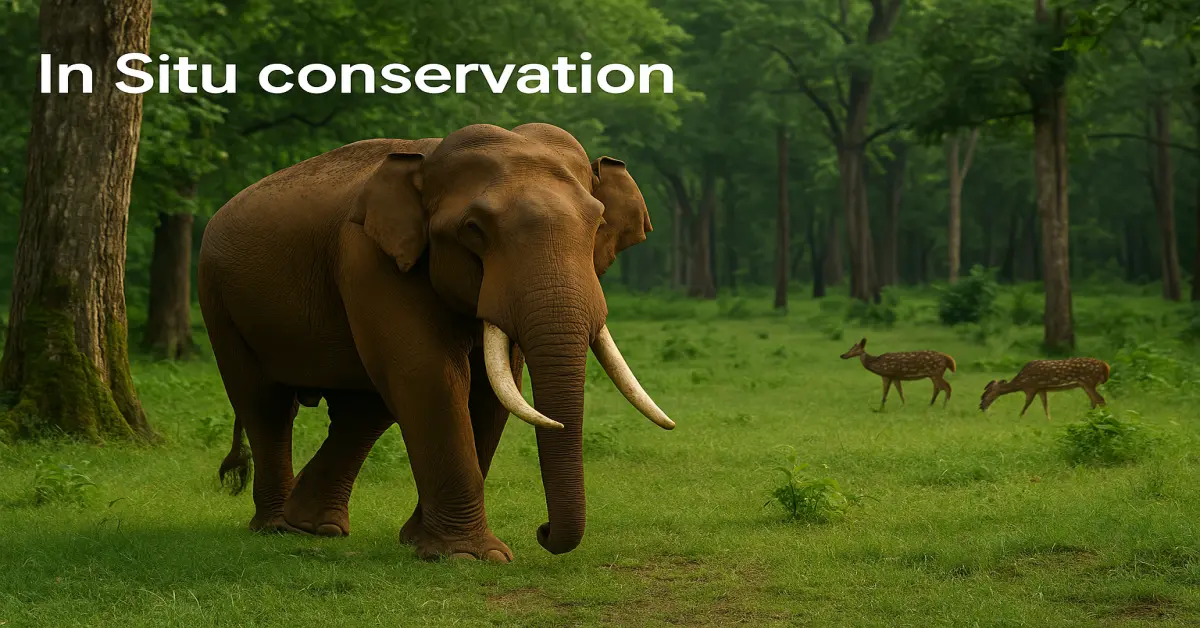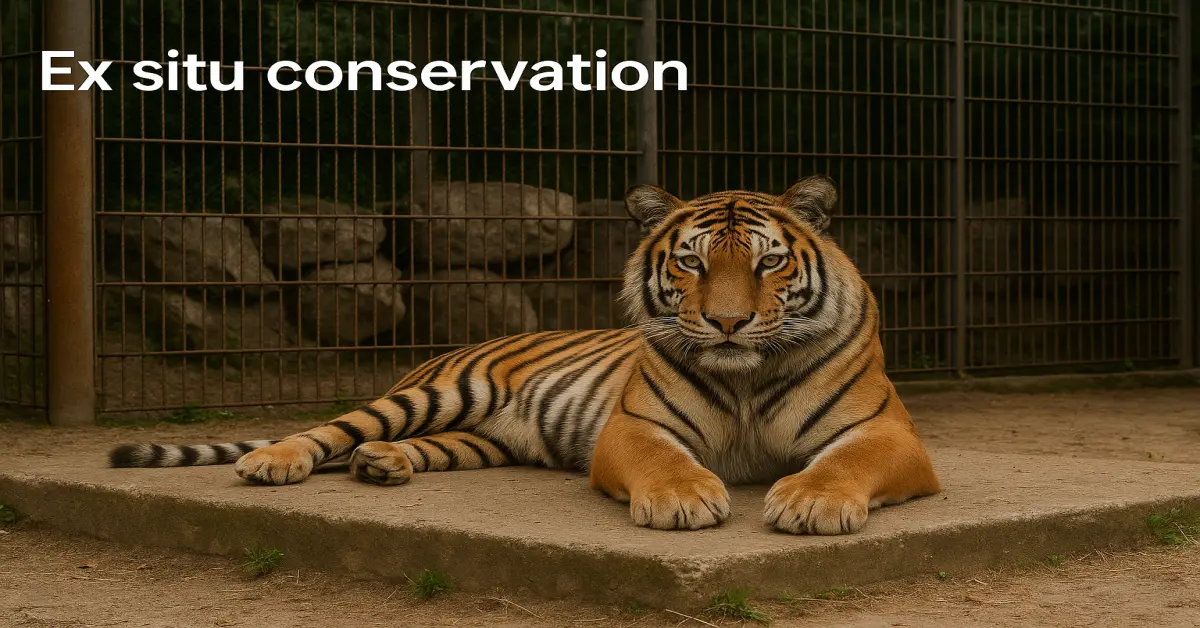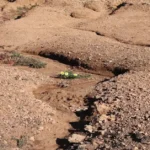Biodiversity is the variety of life found on Earth. It includes plants, animals, and even tiny microbes. Without it, nature cannot stay balanced.
However, many species today are at risk of disappearing forever. Forests are cut down, animals lose their homes, and pollution harms natural ecosystems. To stop this, we need strong efforts for conservation of biodiversity.
That is where In Situ and Ex Situ Biodiversity Conservation comes in. These are two major ways used around the world to protect living things. One works in natural places like forests and national parks. The other protects species in zoos, seed banks, or labs.
In this post, you will learn what both methods mean, how they work, and why they matter. Let us explore how we can help preserve life on Earth—right where it belongs or even far from home.
Biodiversity Conservation and Its Global Importance
Biodiversity means all the different kinds of life on Earth. It includes animals, plants, fungi, and even tiny microbes. Every living thing has a role in keeping nature healthy and balanced.
However, this balance is under threat. Forests are shrinking, oceans are warming, and many animals are vanishing. This is called species extinction, and it is happening faster than ever.
That is why biodiversity conservation is so important. It means protecting all forms of life and their homes. By doing this, we help nature stay strong and support future generations.
For example, bees help pollinate crops. Trees clean the air we breathe. Coral reefs protect coastlines. If we lose these, our lives change too.
Furthermore, saving biodiversity helps fight climate change and supports habitat preservation. Healthy ecosystems store carbon, reduce floods, and provide clean water.
In simple words, biodiversity protection is not just about saving animals. It is about saving ourselves too. Protecting Earth’s genetic diversity helps us all live better, now and in the future.
What is In Situ Conservation?
In Situ Conservation means protecting plants and animals in their natural homes. It allows species to live freely where they were born. This method keeps ecosystems healthy and working the way they should.
For example, a tiger living in a forest is part of a natural system. It hunts prey, helps control animal numbers, and balances nature. If we remove the tiger, that balance breaks. In situ helps protect that natural link.
This form of conservation works by creating safe spaces in the wild. These include national parks, wildlife sanctuaries, and biosphere reserves. These areas are carefully guarded from hunting, pollution, and human damage.
Wildlife sanctuaries, like Kaziranga National Park in India, protect species like rhinos in their real environment. In biosphere reserves, animals, plants, and people live in harmony. These areas are often rich in genetic diversity.
Natural environment conservation helps species grow stronger. They adapt to changing conditions and learn survival skills. That is something they cannot do well in artificial settings.
Furthermore, on-site conservation supports nearby communities. It offers eco-tourism, local jobs, and boosts education. It is not just about animals—it helps people too.
In summary, In Situ Conservation protects nature where it naturally exists. It keeps life connected and ecosystems balanced, offering a strong and lasting way to conserve biodiversity.

Also Read: Northern Bald Ibis: Habitat, Threats and Conservation
What is Ex Situ Conservation?
Ex Situ Conservation is the opposite of in situ. Instead of protecting species in the wild, it takes them out and keeps them safe in controlled spaces. It is also known as off-site conservation.
This method is used when a species is at high risk in the wild. For example, if a plant is near extinction, seeds are stored in seed banks. Or if an animal’s home is gone, it might live in a zoo.
Gene banks and seed vaults are great examples of this method. They store seeds, cells, or DNA in cold and dry places. The famous Svalbard Global Seed Vault in Norway protects over a million seed types from across the world.
Zoos and botanical gardens also play a key role. They care for endangered animals and rare plants in safe environments. For example, pandas in China and orchids in tropical gardens are both protected through ex situ methods.
One big benefit of this method is research and recovery. Scientists can study diseases, breeding, and behavior. They also use this knowledge to help animals return to the wild.
However, ex situ has limits. Animals in cages may lose survival instincts. However, when used wisely, it supports endangered species rescue.
In short, ex situ conservation is a backup plan. It saves life away from danger, giving species another chance to survive and grow.

Major Differences Between In Situ and Ex Situ Biodiversity Conservation
Understanding the difference between conservation methods helps us choose the best way to save life on Earth. Below is a simple comparison of biodiversity conservation approaches based on key factors:
- Location
- In Situ: Takes place in the species’ natural environment.
- Ex Situ: Happens in artificial or controlled settings like zoos or labs.
- Cost-Effectiveness
- In Situ: Usually less expensive and uses fewer resources.
- Ex Situ: Often costly due to technology, staff, and special facilities.
- Long-Term Survival
- In Situ: Species adapt and survive on their own in the wild.
- Ex Situ: Survival depends on human care and support.
- Suitable Species
- In Situ: Best for animals or plants that still have safe habitats.
- Ex Situ: Ideal for species that face immediate extinction risks.
Both methods are important. However, using them wisely depends on the condition of the species and their environment.
Popular Methods of In Situ and Ex Situ Conservation
Here are some widely used conservation techniques that help protect species around the world. These are applied in both in situ and ex situ forms:
- Habitat Restoration
Helps fix damaged ecosystems so species can return and thrive naturally. - Protected Area Networks
Includes national parks, biosphere reserves, and wildlife sanctuaries that guard species in the wild. - Captive Breeding Programs
Used in zoos and labs to increase numbers of endangered animals in safe environments. - Seed Banks and Cryopreservation
Store seeds and plant tissues in frozen conditions to preserve them for the future. - Wildlife Corridors
Connects fragmented habitats, allowing animals to move safely and freely. - Reintroduction Projects
Animals or plants raised in captivity are returned to their natural homes.
These species recovery methods support global biodiversity protection. Combining both types ensures better results for saving our planet’s precious life.
Pros and Cons of In Situ and Ex Situ Conservation
Both in situ and ex situ conservation methods play a key role in protecting life on Earth. However, each comes with its own strengths and challenges. Knowing when to use them is important.
In Situ Conservation – Benefits:
- Species live in their natural environment.
- Ecosystems stay balanced and self-sustaining.
- It costs less money and fewer resources.
- Helps plants and animals adapt naturally over time.
In Situ Conservation – Limitations:
- Habitats may be damaged or unsafe.
- It is harder to control disease, poaching, or climate effects.
- Not ideal for species that are already critically endangered.
Ex Situ Conservation – Benefits:
- Offers a safe, controlled space for species recovery.
- Helps in research and education.
- Can bring species back from the edge of extinction.
Ex Situ Conservation – Limitations:
- Often expensive and complex.
- Species may lose natural survival skills.
- Harder to return them to the wild
Therefore, the best results often come from using both methods together. This balanced approach forms a strong long-term conservation strategy for saving Earth’s biodiversity.
Case Studies of Biodiversity Conservation in Action
Across the world, real-life efforts show how biodiversity conservation can succeed. These stories prove that action and care bring change.
Kaziranga National Park in India is a perfect in situ example. It protects the Indian one-horned rhinoceros, which once faced extinction. Today, the rhino population is growing again thanks to strict protection and community support.
Another inspiring case is the California Condor Recovery Program in the USA. In the 1980s, only 27 condors were left. Conservationists used ex situ methods like captive breeding and later released the birds into the wild. Now, hundreds fly free again.
The Svalbard Global Seed Vault in Norway stores over a million seed samples from around the globe. It acts as a backup for the world’s food supply. If a natural disaster strikes, seeds can be restored.
India’s Project Tiger is another powerful example. By protecting forests and stopping poaching, the number of Bengal tigers has slowly increased.
These species revival programs show how combining in situ and ex situ methods creates real results. Whether it is rhinos, birds, seeds, or tigers, every step matters in saving Earth’s rich life forms.
Conclusion
Both in situ and ex situ conservation methods are vital in protecting Earth’s amazing variety of life. Each method has unique strengths. While one keeps species safe in the wild, the other offers a secure backup when nature fails.
However, no single method works alone. A joint role of in situ and ex situ efforts gives species the best chance to survive. This balanced approach helps us build a sustainable future for ecosystems everywhere.
Therefore, the importance of biodiversity conservation cannot be ignored. Every plant, animal and tiny organism plays a part in nature’s balance.
Let us protect this balance together—whether it is through national parks, seed banks, or awareness in our own lives. The future of our planet depends on what we do today.






